How Many Bubbles Come From Filter System in Easy Set Pool
You designed your dream backyard. The pool, the landscaping, the patio. So much effort, and so worth it. It's a beautiful thing. Except you didn't design the aggressive bubbles shooting out of the returns on the pool walls. So what's up with that? Why are you getting air bubbles in your swimming pool? This is a common problem, especially when you're first opening your pool for the season. A few bubbles in the pool or the pump is normal, but noisy churning and lots of bubbles indicate that you have a problem. Quick recap! Your pump/filter system works like this. Your pump pulls the pool water from the skimmer(s) on the pool wall and the main drain(s) on the pool floor. This water hits the first part of the pump, a small sorta filter called the strainer pot. It catches any major debris right away. After the water goes through the strainer pot, an impeller (spinny thing!) in the pump pushes it on to the filter. Whether you have a sand, cartridge, or D.E. filter, the water goes through it to remove dirt, debris, and (if the filter is good) bacteria. After the water is filtered, it flows through the plumbing to the heater/chiller (if you have one) and then the salt chlorine generator (if you have one). The clean water returns to the pool through the aptly named return jets on the pool walls. Okay, so how does that translate to this issue? Air bubbles in your pool mean that air is being sucked into the line on the suction side of the pump. When you first open your pool, you're putting a lot of things back together in the filter system. Nine times out of ten, the issue isn't in the underground plumbing, but in your aboveground equipment. (And aboveground issues are often easier to fix because you don't have to dig anything up! Yay!) Here at River Pools, we specialize in fiberglass pools. Which is cool! But we aren't just here to manufacture and install. We're here to make your life easier, through every part of the pool journey, even if you don't buy from us. And today, we're going to help you troubleshoot your backyard oasis. So fret not! We've got your back. Air bubbles in your pool mean that air is being sucked into the line on the suction side of the pump. It's likely happening because of one of these issues: Good news: replacing an O-ring is a DIY fix that costs less than $50! First, check how high the water is—specifically, in relation to the skimmers. If the water level is too low, the skimmer will suck in air and send it to the pump/filter system. We recommend you keep the water halfway to three-quarters up the skimmer. For fiberglass pools, never drain your pool. You'll void your warranty and may even damage the pool. Want to know more about proper fiberglass pool maintenance? Our comprehensive fiberglass pool buyer's guide covers every part of the process, from the factory floor to your backyard -- with tons of tips, tricks, price estimates, and recommendations for long-term care. Download your fiberglass guide below: Your pool water should be halfway to three-quarters up the skimmer. It should be closed tight. If it's not snug, you'll suck air through that lid into the pump. Check the O-ring under the lid: Your strainer lid should have its O-ring in the proper groove, with no damage and no dirt or debris obstructions. Third, check the union (fitting) between the pool pump and the valves. Now, this little friend is the most common culprit. It's where we take our plumbing apart, so it has a pretty high chance for missteps. Remember the O-ring from the strainer pot lid? Surprise: there's an O-ring here too! Check the O-ring at this union: Many times, when you're putting the pump/filter system back together, the union's O-ring will slip out or fall out of its groove. And when you throw it off its groove, bad things happen—like letting air in. Reminder: When you tighten your union back up, make sure that the flange (ridge) is flush with the back of the nut. If it's not, something is obstructing the union from fully closing. The union between the valves and the pump should have its O-ring in the proper groove, with no damage and no dirt or debris obstructions. If you check all 3 of these things and still have air bubbles, you might have a bigger problem—like a suction-side leak in your plumbing, which would be coming from either your main drain or your skimmer line. That's more than most pool owners want to handle on their own, so call your friendly neighborhood pool professionals. They'll be happy to help! Side note: You can help prevent plumbing leaks right from the beginning by having your pool builder use only rigid PVC pipes and support that plumbing with A) gravel backfill and B) plumbing straps connecting the pipes to the pool shell (if you have a fiberglass pool). You can learn more about pool installation best practices here. Bubble troubleshooting isn't all we're good at. In our blog and our YouTube videos, we cover all the most common questions about pools—and some of the more obscure questions, too. We believe in full transparency; that's The River Pools Way. (And so are our advanced manufacturing techniques and our advanced installation methods. It's a beautiful blend of values and practices.) At River Pools we manufacture and install fiberglass pools across the country, with the help of a highly-skilled nationwide team of dealers and installation professionals. We're big proponents of fiberglass pools, obviously, although we know that they aren't the best fit for every situation. While the shapes and sizes are less customized, most people can find a model that fits their needs. The aesthetics, longevity, and low maintenance make them a huge win in our book. Get in touch with us. We'd love to help you any way we can! How Long Should I Run My Pool Pump? The Ultimate Guide to Inground Swimming Pool Maintenance Fiberglass Swimming Pools 101: Manufacturing, Cost, and More Editor's note: This blog article was updated on January 27, 2020.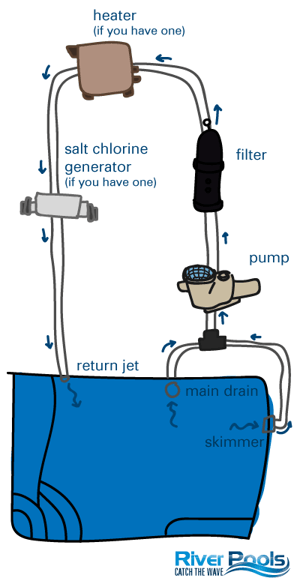
What are the most common reasons for pool air bubbles?
1. Is your water level correct?
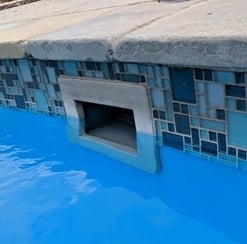
What's the proper water level for a swimming pool?


2. Is your strainer lid on tight?
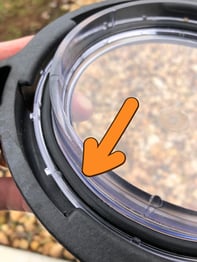 Second, check the strainer pot lid.
Second, check the strainer pot lid.

3. Is your pump/valve union on tight?
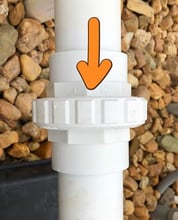
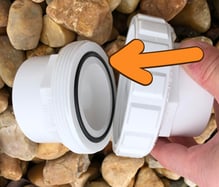

Still have air bubbles in your pool?
Want to learn more about pools?

Up Next:
Source: https://www.riverpoolsandspas.com/blog/why-do-i-have-bubbles-in-pool
0 Response to "How Many Bubbles Come From Filter System in Easy Set Pool"
Post a Comment